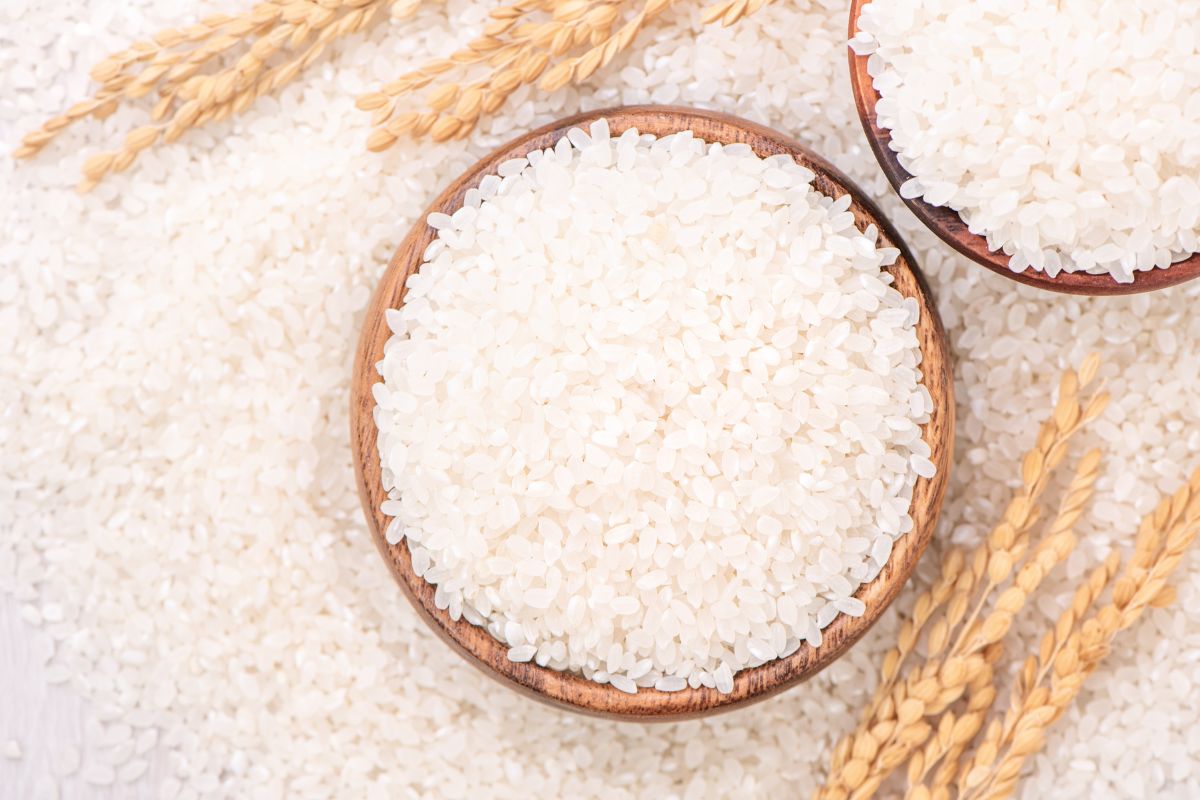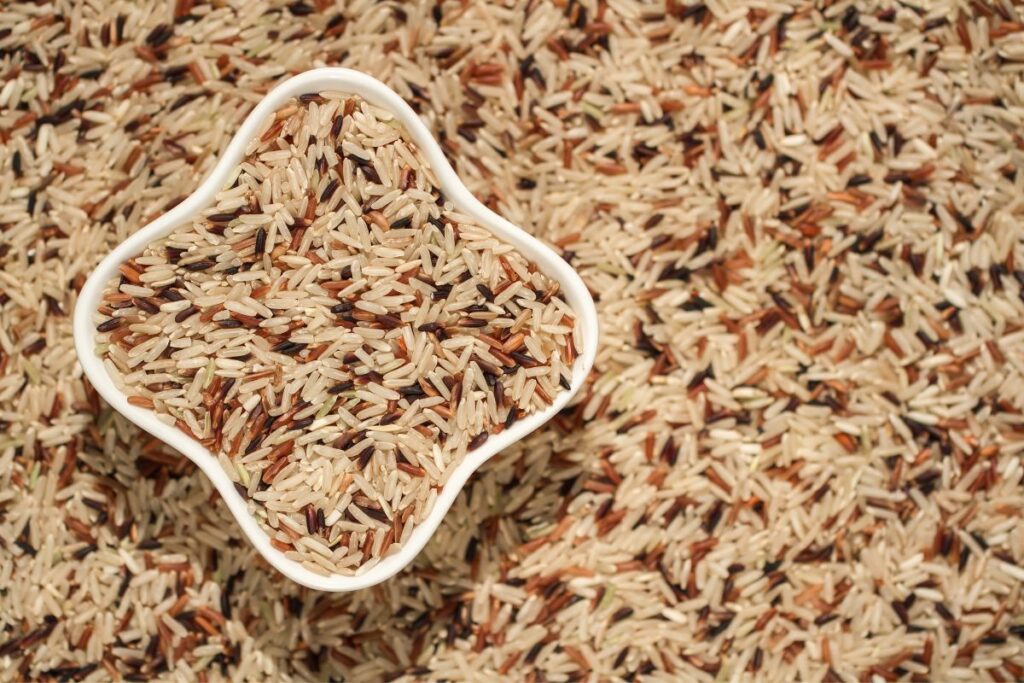Grains are known as a type of grass crop that generates seeds, these are then harvested to be consumed by animals and humans alike.
These tiny seeds are essentially the fruits of these types of grass plants; thus, they are also one of the most utilized plants on Earth.
Many of the foods you consume within your daily diet are the result of cultivating grain crops, which includes rice, too.
With this in mind, this article will explore everything you need to know about rice, including how rice is made.
Let’s get straight into it!
A Brief Introduction To Rice
Rice is considered to be one of the most produced grains in the world, contributing to billions of people’s diets every day. In fact, in over 100 countries, around 3 billion people rely on rice in their daily lives.
From 2000, the global production of rice grew exponentially – by nearly 25%. Plus, in 2019 alone, there were roughly 756 million tonnes or 1.6 trillion pounds of rice in the world being produced.
Since rice is incredibly versatile, it has been a stable ingredient in many different cuisines across the world. Plus, there is a range of varieties grown worldwide, too.
Two of the most common types of rice grown include Oryza glaberrima (African rice) and Oryza sativa (Asian rice).
Some of the most popular Asian varieties of rice include basmati rice, black rice, jasmine rice, and tinawon rice. These varieties range in grain length and color, with many containing fragrant and strong flavor profiles, too.
Moreover, varieties of African rice tend to be darker, ranging from diverse colors including brown, purple, and red.
Despite African rice maturing at a much faster rate than Asian rice, it is harder to mill. Hence, it isn’t consumed or grown as commonly when compared to the past.
How Is Rice Made?

There are some parts of the world where rice continues to be harvested by hand, however, in most cases, modern rice production is achieved through machinery, whereby they are doing all the heavy lifting and fulfilling the world’s demand for rice.
Harvesting
Harvesting is the first step to producing rice. It takes approximately five months – from seed to plant – for rice to be ready for harvest.
Here, a combine harvester is used to remove the rice seeds from the stalks where it is then taken to a processing facility.
Delivery
Once delivered to the processing facility, the raw rice is placed in an underground receiving pit where it is filtered for any debris or remaining stalks.
From here, a conveyor belt is used to transfer the rice to a storage silo where they are held in warehouses and can hold thousands of kilograms of rice.
Inside the warehouse, fans are used to keep the rice cool and maintain a moisture level between 18% and 22%.
Tests
The testing process is a vital part of rice production. Here, a probe is used to pick up random samples which are used by a technician to determine the moisture content in the rice.
Moreover, they will also analyze grains through a sieve to highlight any foreign objects in the rice, including bugs that may have gotten through.
This is vital since a single beetle or moth can make a whole batch of rice unusable.
Filtering
To make sure the rice is clean, it is put through a tumbling process whereby it travels through small holes in rolling cylinders to remove any detritus, this could include weed seed, straw, and small clumps of mud – while removing rice husks, too.
Hulling
Once the rice has been cleaned, it is then pushed between two stone or hard rubber rollers to crush the remaining husks, and then a second machine is used to separate the husks and grains of rice.
During the rice production process, this is one of the most important stages. While it is inevitable some grains will be missed, the batch is placed in agitator machines to ensure each grain is perfect.
Milling
At this stage, the outer layers of the rice, known as the bran, still remain. When producing brown rice, this is kept on. However, for white rice, the bran is removed.
This is achieved by using a hulling machine. Once the outer bran layer is removed, the rice is then placed in a centrifuge. This rotates the rice at extremely high speeds to ensure every outer layer has been removed.
Instead of being simply discarded, the bran is used to become a key ingredient in cattle feed.
After, the rice is polished to achieve its pearly-white sheen, and any broken kernels and caught and removed from the batch.
Finishing Touches
To make sure the rice is suitable for sale, computerized cameras are used to analyze each batch and look out for discoloration in the grains.
If any are detected, targeted nozzles will blast them out of the particular batch. After, the rice is weighed out and fed through machines into bags.
Here, the bags are heat-sealed and sent to supermarkets, commercial food production factories, and wholesalers to be sold.
Nutritional Value

Even though rice plays a huge role in some people’s diets across the world, the product itself is deficient in many minerals, vitamins, and phytonutrients – these are nutrients produced by plants that improve your overall health and prevent diseases.
In fact, rice is generally made up of a small level of protein and mostly carbohydrates.
That being said, the nutritional value can be depending on how refined the rice is and whether or not it has been enriched with additional vitamins and minerals.
All rice starts as a whole grain, although, to extend the shelf life, it is usually placed through a milling process that removes the outer bran, as well as the germ of the grain.
This leaves only the endosperm left. This is commonly known as refined, or, most notably, white rice.
That being said, the germ and bran are the parts that contain the most nutrients, although this is unfortunately discarded.
As a result, most refined varieties of rice are supplemented with additional nutrients after the milling process to make up for this – improving the nutritional profile.
For this reason, brown rice is considered healthier since the bran remains, supplying you with all those nutrients without the need for supplements.
Final Thoughts
Not only is rice a staple pantry ingredient but it is also one of the most widely consumed foods in the world. From culture to culture, there are many different ways one can eat rice. For instance, in Japan rice is used for sushi.
Rice itself comes from a grass plant that goes through a range of processes that make it suitable for human consumption. The end result is a pearly white grain of rice, ready to be cooked.
That being said, on its own, rice can be particularly deficient in many key nutrients, including vitamins and minerals.
As such, supplements will usually be added during the milling process. Hopefully, this guide has informed you about how rice is made.








